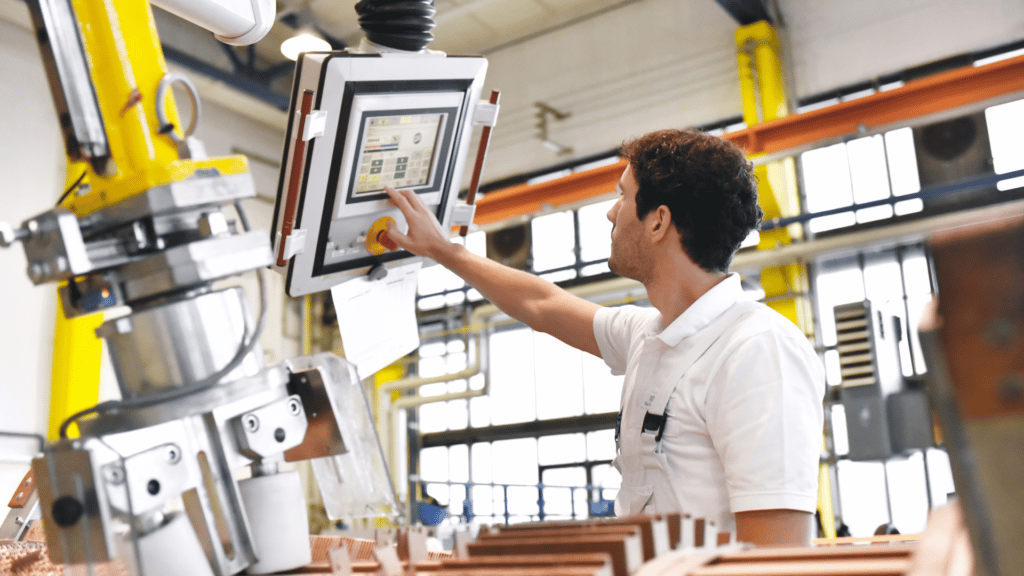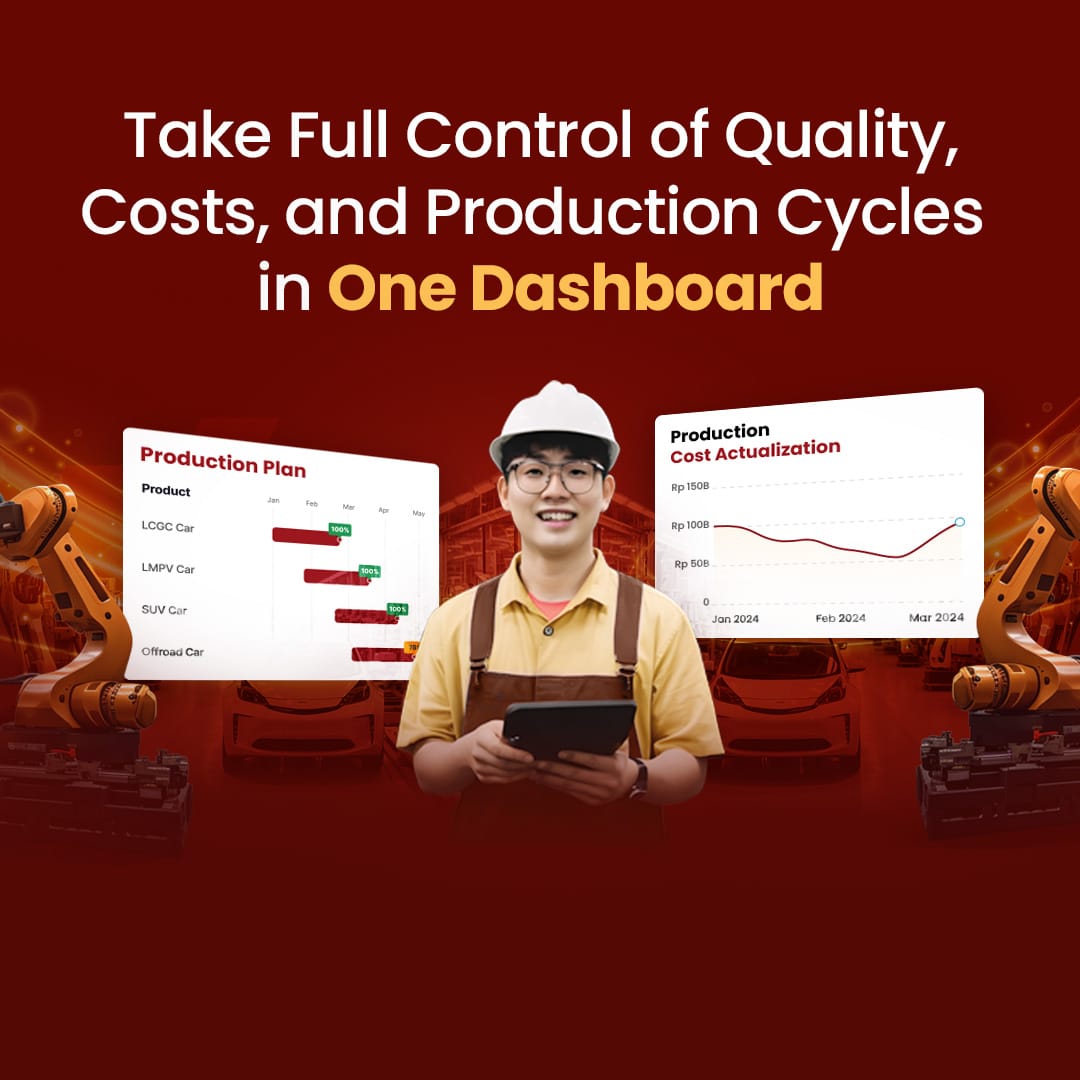Covid-19 and its rippling effects irreversibly changed many businesses and industries. It forced companies to eliminate manual processes for faster outcomes and reduced reliance on skilled resources, a challenge many sectors will face for some time. Therefore, manufacturers need innovations to stay efficient and agile, and automating production planning is essential.

Table of Content:
Table of Content
Automate production planning using Manufacturing Software
Automation in manufacturing is using production management software or robotic tools to operate a factory when making a physical product. By using Manufacturing Software and having a solid production plan, manufacturers can achieve their goals, maximize productivity, reduce and avoid waste, create quality goods, and, more importantly, satisfy their customers. Your company needs to start using Manufacturing Software to automate production planning.
Also read: Manufacturing Tips: How to Optimize Your Production Planning
Why Does Your Manufacture Need Automating?
By automating production planning, the workflow will be streamlined because it removes human process errors and delays to keep operations lean, efficient, and productive — and also allow manufacturers to measure asset and production performance. These are the reasons why automating production planning is essential for your business.
1. Boost productivity
Many companies now have to deal with the new norm, in which they have less skilled workers than they did in the past, to keep up with rising demand. Companies need to automate production processes to save time, reduce mistakes, and produce tremendous results. Manufacturing software is made to do jobs faster than a person; it doesn’t need to sleep, take breaks, or eat. This makes operations that run 24/7 more efficient. Ultimately, process automation helps companies to accomplish more with fewer resources in less time.
2. Produce valuable data
Manufacturers are always looking for ways to improve their business processes and do a better job. Data is a crucial part of this success. Manufacturing Software enables production visualizations and dashboards as well as asset performance management. This allows a manufacturer to capture, visualize, and analyze live data on machine health and performance to get a live view of “what’s going on.” The manufacturing environment is very fast-paced and constantly changing. In the new reality of manufacturing, gaining a competitive edge means automating data collection and visualizations to find things like efficiency, throughput, and maintainability.
3. Creates more jobs
There has been considerable debate about whether automation and digital transformation are leading to mass unemployment, in which robots and computers take over jobs. Automation is no longer a threat to employees but an essential tool for any manufacturer. This suite of tools will liberate staff from monotonous and repetitive chores, allowing them to focus on business strategy. Consequently, employers can provide employees with opportunities to further their careers, allowing them to retain valuable personnel – a crucial factor during the “Great Resignation.”
Also read: 5 Best Manufacturing Software to Help Your Mass Production
The Benefits of Using Automation in Manufacturing
Automation has much to offer the manufacturing industry, including better maintenance, lower costs, and better safety. With the improvement of technology, manufacturing companies worldwide are using automation tools and techniques to streamline their processes and get more out of their workers. Here is a breakdown of some other benefits of using Manufacturer Software to automate production planning that you need to know.
1. Product quality control
The most crucial task of the manufacturing industry is to check the quality of the product before it gets to its core audience. Without automation in quality control, human laborers are employed to check the flaws in the product manually. With the help of automation, the market gets high-quality goods.
The Internet of Things (IoT) makes the quality control process very proactive and automated. At each stage of a product’s life cycle, the quality of the product is checked with the help of video and thermal sensors. This process is done without any human interaction. The main ways to measure the quality of an automated process for making a product are the conditions of the environment, the machines, and the calibration of the equipment.
2. Efficient inventory management
In today’s manufacturing industries, inventory management is done with much automation. But you can’t have good inventory management without putting IoT devices into manufacturing. Radio Frequency Identification (RFID) makes this part of managing inventory easy and efficient. In these processes, an RFID tag is attached to each item in the stock.
This tag has a unique identification number and digital information about the product. In this case, the role of IoT is to turn the data collected by RFID sensors into useful information. For example, the automated inventory management architecture can determine the type and amount of raw materials needed to finish the product life cycle based on the data collected about where and how much inventory is on hand. IoT gives supply chain management complete transparency into work-in-progress, raw material arrival, and material projections. This optimizes material handling and manufacturing.
3. Effective maintenance schedule
Most of the time, manufacturers use methods and practices based on the time when making a maintenance schedule for machinery and equipment. However, the ARC group found that age accounts for only 18% of equipment failures, while random causes accounted for the remaining 82%. Time-based maintenance schedules are neither cost-effective nor efficient.
Manufacturing businesses can employ automation, data science, and industrial IoT for predictive maintenance. Attaching IoT sensors to equipment can help determine when it requires maintenance. Prompt equipment repair can save money, reduce downtime, and simplify task allocation. Predictive maintenance modeling helps managers spot system irregularities and analyze root causes to avoid production delays and machine failure.
Conclusion
The benefits of automating manufacturing are limitless because most automated actions are based on sensor and smart device data. Automation improves product quality, inventory management, maintenance schedules, asset tracking, worker safety, and operational costs. Now it is time for you to start using Manufacturing Software to experience all those benefits. HashMicro is the best Manufacturing Software provider. Get the Manufacturing Software pricing scheme from HashMicro now and try the free demo.






































